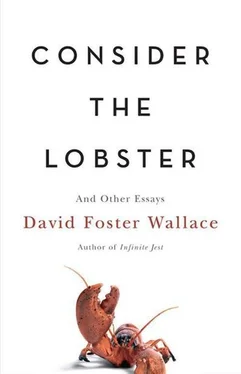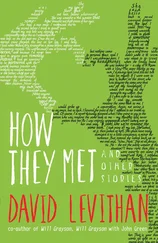For practical purposes, everyone knows what a lobster is. As usual, though, there’s much more to know than most of us care about — it’s all a matter of what your interests are. Taxonomically speaking, a lobster is a marine crustacean of the family Homaridae, characterized by five pairs of jointed legs, the first pair terminating in large pincerish claws used for subduing prey. Like many other species of benthic carnivore, lobsters are both hunters and scavengers. They have stalked eyes, gills on their legs, and antennae. There are a dozen or so different kinds worldwide, of which the relevant species here is the Maine lobster, Homarus americanus . The name “lobster” comes from the Old English loppestre, which is thought to be a corrupt form of the Latin word for locust combined with the Old English loppe, which meant spider.
Moreover, a crustacean is an aquatic arthropod of the class Crustacea, which comprises crabs, shrimp, barnacles, lobsters, and freshwater crayfish. All this is right there in the encyclopedia. And arthropods are members of the phylum Arthropoda, which phylum covers insects, spiders, crustaceans, and centipedes/millipedes, all of whose main commonality, besides the absence of a centralized brain-spine assembly, is a chitinous exoskeleton composed of segments, to which appendages are articulated in pairs.
The point is that lobsters are basically giant sea insects. 3 Like most arthropods, they date from the Jurassic period, biologically so much older than mammalia that they might as well be from another planet. And they are — particularly in their natural brown-green state, brandishing their claws like weapons and with thick antennae awhip — not nice to look at. And it’s true that they are garbagemen of the sea, eaters of dead stuff, 4 although they’ll also eat some live shellfish, certain kinds of injured fish, and sometimes one another.
But they are themselves good eating. Or so we think now. Up until sometime in the 1800s, though, lobster was literally low-class food, eaten only by the poor and institutionalized. Even in the harsh penal environment of early America, some colonies had laws against feeding lobsters to inmates more than once a week because it was thought to be cruel and unusual, like making people eat rats. One reason for their low status was how plentiful lobsters were in old New England. “Unbelievable abundance” is how one source describes the situation, including accounts of Plymouth Pilgrims wading out and capturing all they wanted by hand, and of early Boston’s seashore being littered with lobsters after hard storms — these latter were treated as a smelly nuisance and ground up for fertilizer. There is also the fact that premodern lobster was cooked dead and then preserved, usually packed in salt or crude hermetic containers. Maine’s earliest lobster industry was based around a dozen such seaside canneries in the 1840s, from which lobster was shipped as far away as California, in demand only because it was cheap and high in protein, basically chewable fuel.
Now, of course, lobster is posh, a delicacy, only a step or two down from caviar. The meat is richer and more substantial than most fish, its taste subtle compared to the marine-gaminess of mussels and clams. In the US pop-food imagination, lobster is now the seafood analog to steak, with which it’s so often twinned as Surf ’n’ Turf on the really expensive part of the chain steakhouse menu.
In fact, one obvious project of the MLF, and of its omnipresently sponsorial Maine Lobster Promotion Council, is to counter the idea that lobster is unusually luxe or unhealthy or expensive, suitable only for effete palates or the occasional blow-the-diet treat. It is emphasized over and over in presentations and pamphlets at the festival that lobster meat has fewer calories, less cholesterol, and less saturated fat than chicken. 5 And in the Main Eating Tent, you can get a “quarter” (industry shorthand for a 11/4-pound lobster), a four-ounce cup of melted butter, a bag of chips, and a soft roll w/ butter-pat for around $12.00, which is only slightly more expensive than supper at McDonald’s.
Be apprised, though, that the Maine Lobster Festival’s democratization of lobster comes with all the massed inconvenience and aesthetic compromise of real democracy. See, for example, the aforementioned Main Eating Tent, for which there is a constant Disneyland-grade queue, and which turns out to be a square quarter mile of awning-shaded cafeteria lines and rows of long institutional tables at which friend and stranger alike sit cheek by jowl, cracking and chewing and dribbling. It’s hot, and the sagged roof traps the steam and the smells, which latter are strong and only partly food-related. It is also loud, and a good percentage of the total noise is masticatory. The suppers come in styrofoam trays, and the soft drinks are iceless and flat, and the coffee is convenience-store coffee in more styrofoam, and the utensils are plastic (there are none of the special long skinny forks for pushing out the tail meat, though a few savvy diners bring their own). Nor do they give you near enough napkins considering how messy lobster is to eat, especially when you’re squeezed onto benches alongside children of various ages and vastly different levels of fine-motor development — not to mention the people who’ve somehow smuggled in their own beer in enormous aisle-blocking coolers, or who all of a sudden produce their own plastic tablecloths and spread them over large portions of tables to try to reserve them (the tables) for their own little groups. And so on. Any one example is no more than a petty inconvenience, of course, but the MLF turns out to be full of irksome little downers like this — see for instance the Main Stage’s headliner shows, where it turns out that you have to pay $20 extra for a folding chair if you want to sit down; or the North Tent’s mad scramble for the Nyquil-cup-sized samples of finalists’ entries handed out after the Cooking Competition; or the much-touted Maine Sea Goddess pageant finals, which turn out to be excruciatingly long and to consist mainly of endless thanks and tributes to local sponsors. Let’s not even talk about the grossly inadequate Port-A-San facilities or the fact that there’s nowhere to wash your hands before or after eating. What the Maine Lobster Festival really is is a midlevel county fair with a culinary hook, and in this respect it’s not unlike Tidewater crab festivals, Midwest corn festivals, Texas chili festivals, etc., and shares with these venues the core paradox of all teeming commercial demotic events: It’s not for everyone. 6 Nothing against the euphoric senior editor of Food & Wine, but I’d be surprised if she’d ever actually been here in Harbor Park, amid crowds of people slapping canal-zone mosquitoes as they eat deep-fried Twinkies and watch Professor Paddywhack, on six-foot stilts in a raincoat with plastic lobsters protruding from all directions on springs, terrify their children.
Lobster is essentially a summer food. This is because we now prefer our lobsters fresh, which means they have to be recently caught, which for both tactical and economic reasons takes place at depths less than 25 fathoms. Lobsters tend to be hungriest and most active (i.e., most trappable) at summer water temperatures of 45–50 degrees. In the autumn, most Maine lobsters migrate out into deeper water, either for warmth or to avoid the heavy waves that pound New England’s coast all winter. Some burrow into the bottom. They might hibernate; nobody’s sure. Summer is also lobsters’ molting season — specifically early- to mid-July. Chitinous arthropods grow by molting, rather the way people have to buy bigger clothes as they age and gain weight. Since lobsters can live to be over 100, they can also get to be quite large, as in 30 pounds or more — though truly senior lobsters are rare now because New England’s waters are so heavily trapped. 7 Anyway, hence the culinary distinction between hard- and soft-shell lobsters, the latter sometimes a.k.a. shedders. A soft-shell lobster is one that has recently molted. In midcoast restaurants, the summer menu often offers both kinds, with shedders being slightly cheaper even though they’re easier to dismantle and the meat is allegedly sweeter. The reason for the discount is that a molting lobster uses a layer of seawater for insulation while its new shell is hardening, so there’s slightly less actual meat when you crack open a shedder, plus a redolent gout of water that gets all over everything and can sometimes jet out lemonlike and catch a tablemate right in the eye. If it’s winter or you’re buying lobster someplace far from New England, on the other hand, you can almost bet that the lobster is a hard-shell, which for obvious reasons travel better.
Читать дальше












